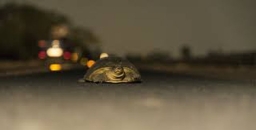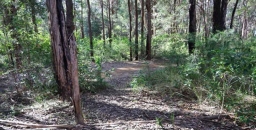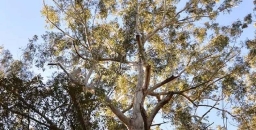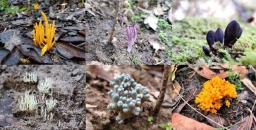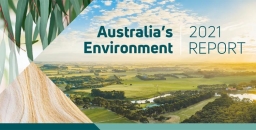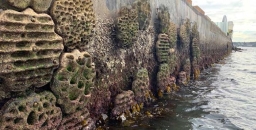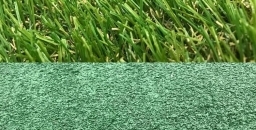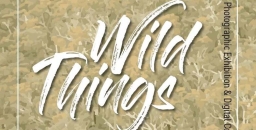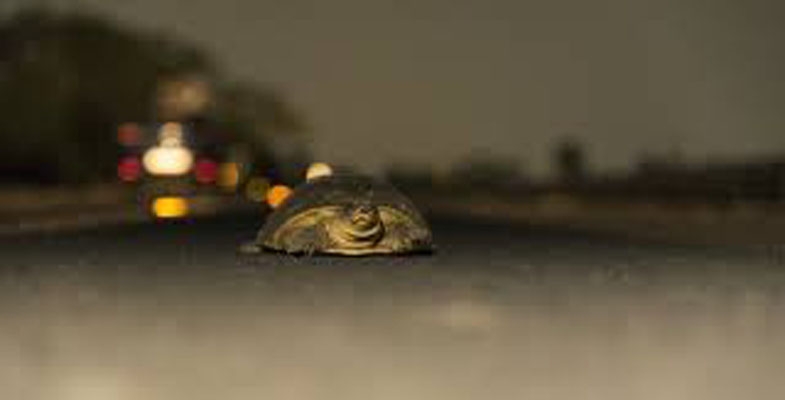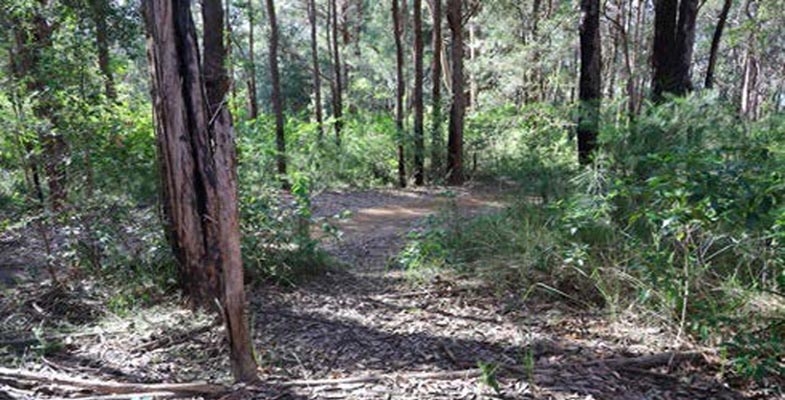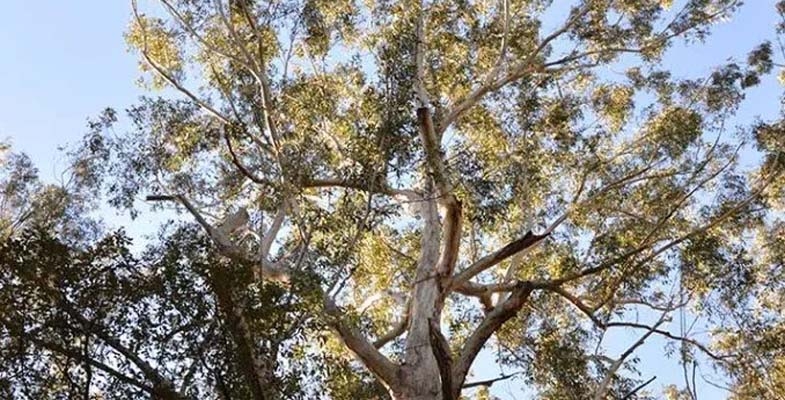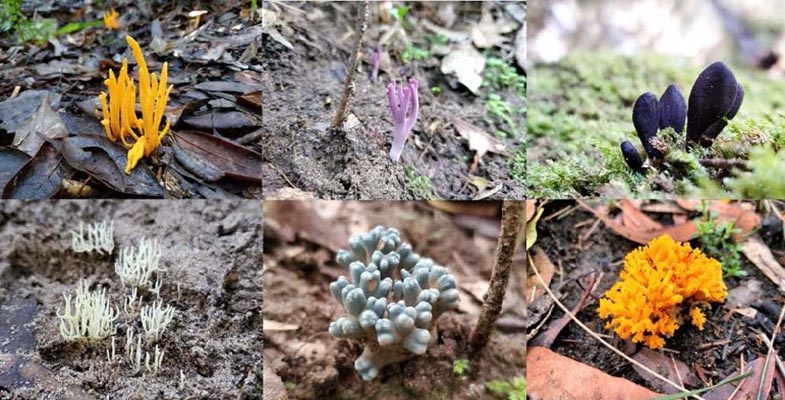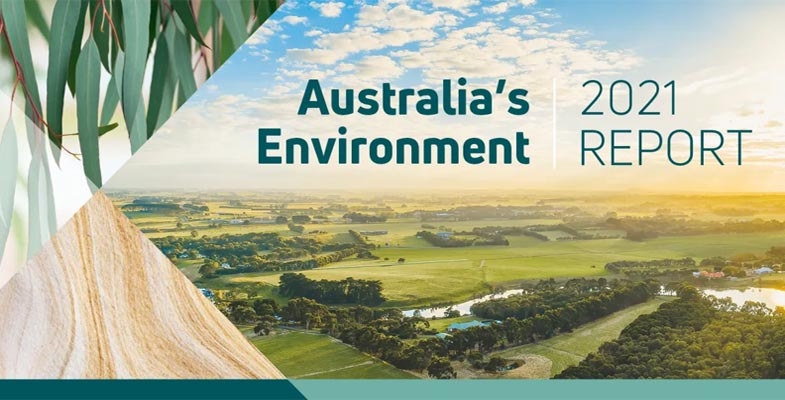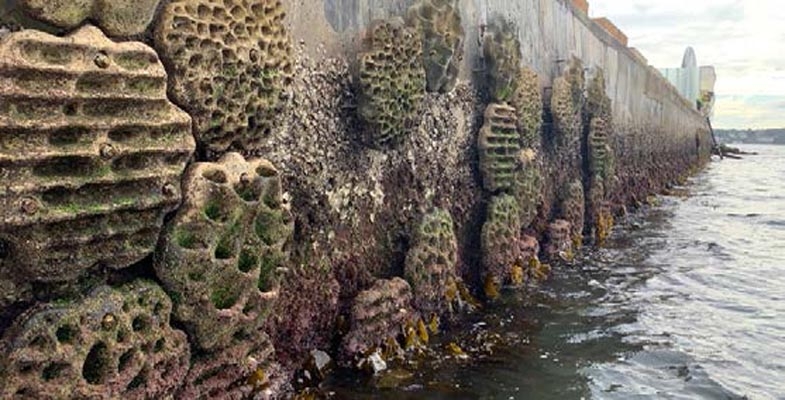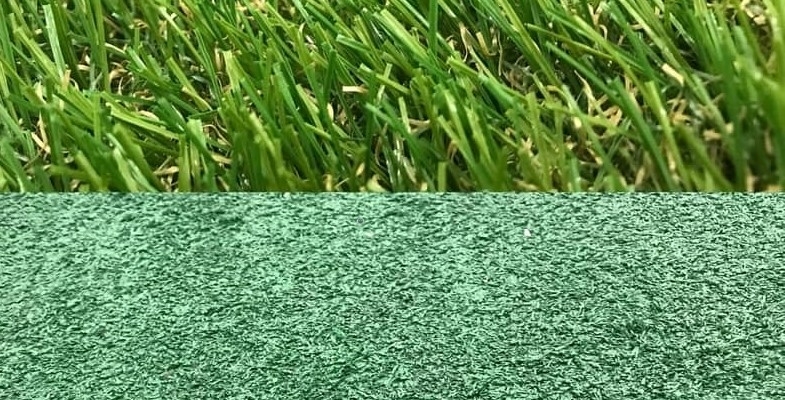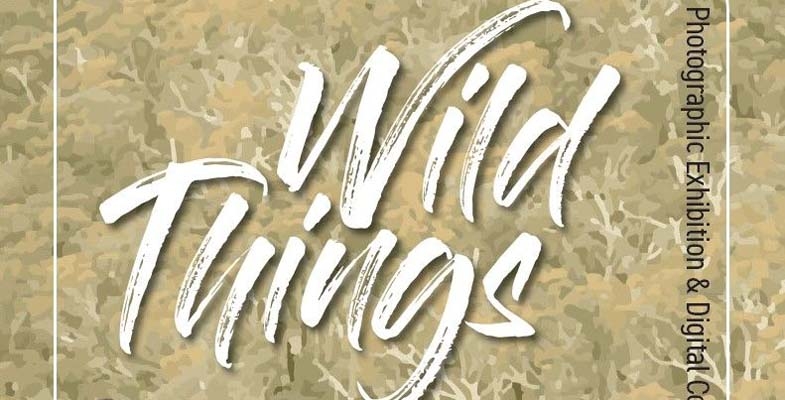STEP Matters 217
- Default
- Title
- Date
- Random
- In our submissions STEP has often highlighted the issue of the disruption to animal behaviour from artificial light spill. Examples…Read More
- Near the end of Quarter Sessions Road in Westleigh there is a large area of land (34 ha) that was…Read More
- We are all aware of trees being chopped down and poisoned in order to facilitate development (subdivision) or views. The…Read More
- Fungi are poorly known. Of the estimated 3 to 8 million species in existence, only about 120,000 species ever have…Read More
- The first State of the Environment (SoE) report for Australia was produced in 1996 by a team led by Prof…Read More
- In August the NSW Environment Minister, James Griffin, announced a project, dubbed the Seabirds to Seascapes project that aims to…Read More
- While Ku-ring-gai Council was in caretaker mode in December 2021, Mayor Cedric Spencer signed the documents giving the go-ahead for…Read More
- WildThings NSW is a local not-for-profit organisation with a goal to promote, protect and enhance urban wildlife and their habitats…Read More
Artificial light at night can change the behaviour of all animals, not just humans
In our submissions STEP has often highlighted the issue of the disruption to animal behaviour from artificial light spill. Examples are the Canoon Road netball complex and the proposed skyscraper at Eden Gardens (still to be approved). This article explaining the issue was published in The Conversation on 28 July 2022.
As the Moon rises on a warm evening in early summer, thousands of baby turtles emerge and begin their precarious journey towards the ocean, while millions of moths and fireflies take to the air to begin the complex process of finding a mate.
These nocturnal behaviours, and many others like it, evolved to take advantage of the darkness of night. Yet today, they are under a increasing threat from the presence of artificial lighting.
At its core, artificial light at night (such as from street lights) masks natural light cycles. Its presence blurs the transition from day to night and can dampen the natural cycle of the Moon. Increasingly, we are realising this has dramatic physiological and behavioural consequences, including altering hormones associated with day-night cycles of some species and their seasonal reproduction, and changing the timing of daily activities such as sleeping, foraging or mating.
The increasing intensity and spread of artificial light at night (estimates suggest 2-6% per year) makes it one of the fastest-growing global pollutants. Its presence has been linked to changes in the structure of animal communities and declines in biodiversity.
How animals are affected by artificial lighting
Light at night can both attract and repel. Animals living alongside urban environments are often attracted to artificial lights. Turtles can turn away from the safety of the oceans and head inland, where they may be run over by a vehicle or drown in a swimming pool. Thousands of moths and other invertebrates become trapped and disoriented around urban lights until they drop to the ground or die without ever finding a mate. Female fireflies produce bioluminescent signals to attract a mate, but this light can’t compete with street lighting, so they too may fail to reproduce.
Each year it is estimated millions of birds are harmed or killed because they are trapped in the beams of bright urban lights. They are disoriented and slam into brightly lit structures, or are drawn away from their natural migration pathways into urban environments with limited resources and food, and more predators.
Other animals, such as bats and small mammals, shy away from lights or may avoid them altogether. This effectively reduces the habitats and resources available for them to live and reproduce. For these species, street lighting is a form of habitat destruction, where a light rather than a road (or perhaps both) cuts through the darkness required for their natural habitat. Unlike humans, who can return to their home and block out the lights, wildlife may have no option but to leave.
For some species, light at night does provide some benefits. Species that are typically only active during the day can extend their foraging time. Nocturnal spiders and geckos frequent areas around lights because they can feast on the multitude of insects they attract. However, while these species may gain on the surface, this doesn’t mean there are no hidden costs. Research with insects and spiders suggests exposure to light at night can affect immune function and health and alter their growth, development and number of offspring.
How can we fix this?
There are some real-world examples of effective mitigation strategies. In Florida, many urban beaches use amber-coloured lights (which are less attractive to turtles) and turn off street lights during the turtle nesting season. On Philip Island, Victoria, home to more than a million short-tailed shearwaters, many new street lights are also amber and are turned off along known migration pathways during the fledging period to reduce deaths.
In New York, the Tribute in Light (which consists of 88 vertical searchlights that can be seen nearly 100km away) is turned off for 20-minute periods to allow disoriented birds (and bats) to escape and to reduce the attraction of the structure to migrating animals.
In all cases, these strategies have reduced the ecological impact of night lighting and saved the lives of countless animals.
However, while these targeted measures are effective, they do not solve what might be yet another global biodiversity crisis. Many countries have outdoor lighting standards, and several independent guidelines have been written but these are not always enforceable and often open to interpretation.
As an individual there are things you can do to help, such as:
default to darkness: only light areas for a specific purpose
embrace technology: use sensors and dimmers to manage lighting frequency and intensity
location, location, location: keep lights close to the ground, shield at the rear, and direct light below the horizontal
respect the spectrum: choose low-intensity lights that limit the blue, violet and ultraviolet wavelengths. Wildlife is less sensitive to red, orange and amber light
all that glitters: choose non-reflective finishes for your home. This reduces the scattered light that contributes to sky glow
In one sense, light pollution is relatively easy to fix – we can simply not turn on the lights and allow the night to be illuminated naturally by moonlight.
Logistically, this is mostly not feasible as lights are deployed for the benefit of humans who are often reluctant to give them up. However, while artificial light allows humans to exploit the night for work, leisure and play, in doing so we catastrophically change the environment for many other species.
In the absence of turning off the lights, there are other management approaches we can take to mitigate their impact. We can limit their number; reduce their intensity and the time they are on; and, potentially change their colour. Animal species differ in their sensitivity to different colours of light and research suggests some colours (ambers and reds) may be less harmful than the blue-rich white lights becoming commonplace around the world.![]()
Therésa Jones, Associate Professor in Evolution and Behaviour, The University of Melbourne and Kathryn McNamara, Post-doctoral research associate, The University of Melbourne
This article is republished from The Conversation under a Creative Commons license. Read the original article.
Urgent action required on illegal Westleigh mountain bike trails
Near the end of Quarter Sessions Road in Westleigh there is a large area of land (34 ha) that was owned by Sydney Water until it was bought by Hornsby Council in 2016. This site has had various uses over the years; a training site for the RFS and a dumping ground for asbestos. There is a large area of bushland near the Sydney Water reservoir. Most of the land not been managed for many years.
As there was no management of the bushland, local mountain bike riders have built a huge network of trails and claimed the area as their own, calling it the H2O facility. Many of these trails go through a large area of high quality critically endangered Sydney Turpentine Ironbark Forest (STIF) and endangered Duffys Forest. The future survival of these forest areas is at risk from the bikes riding over tree roots, soil compaction and weed invasion. The activity also disturbs the wildlife especially as night riding is occurring. The other areas of bush are also valuable and contain threatened plants and orchids.
Hornsby Council drew up a master plan for the site. Submissions were made in June 2021. The plan proposed that most of the network of bike trails in the endangered forest areas be closed and rehabilitated. The trails would be relocated to the edges and away from high value biodiversity. The trails in the other bush areas would remain and be upgraded.
So what has happened since? There have been various forms of consultation with local residents, bikers and conservation groups. Basically the mountain bikers are very unhappy about losing the trails in the forest and have been actively lobbying the council. STEP and all the local conservation groups want the trails removed from the endangered forests.
In fact, council’s development of the Westleigh Park site has to heed the conservation advice for STIF issued by the Australian Government in response to its listing as critically endangered under the EPBC Act. This states that the priority recovery and threat abatement actions required for this ecological community are:
- to prevent further clearing or fragmentation of the ecological community
- to manage weeds within existing remnants
- to identify and fence important remnants to minimise impacts from grazing and recreational activities
- to rehabilitate degraded but recoverable remnants so that they meet the condition criteria for the ecological community
A series of workshops was held in June with representatives of the mountain bikers, environment groups and local residents. The plan was to resolve the impasse and come to a consensus on where the trails should go. Council could then proceed with the next stage of the development process in getting detailed environmental information and approvals. This was a very time consuming process (13 hours in total) that basically came to no decision. Naturally the conservation groups and the local residents wanted the illegal trails removed. The bikers argued that the trails were of great benefit for teaching young riders new skills and a love of the bush in the lovely shady trails. The forest in the STIF area in particular is mostly level and ideal for learner riders.
So the ball is back in the court of Hornsby Council where it should be. No news has been heard from council. H2O is still in operation so the damage continues and no action is being taken to close the endangered forest areas and start their rehabilitation. This laissez faire attitude is reprehensible.
Measures to (hopefully) prevent illegal tree removal
We are all aware of trees being chopped down and poisoned in order to facilitate development (subdivision) or views. The grind of chain saws and mulching machines can be heard every week. How do we know if the tree removal is legal? Ku-ring-gai Council has a tree preservation order but only occasionally is there publicity about this regulation being breached and a paltry fine being issued.
As reported in the Sydney Morning Herald on 19 April, Ku-ring-gai’s tree canopy cover declined by 2.4% over the 7 years 2013 to 2020. By contrast the draft Urban Forest Strategy aims to increase cover in residential areas from 35.6 to 40% over the next 10 years. Much of the reduction has come from building new houses that occupy most of the block and leave no room for trees. The complying development code that is controlled by the state government overrides many of the council provisions aimed at keeping tree canopy. This should be an issue at the state election next March.
At the last meeting council passed a resolution that we hope will help make a difference. The aim is:
…to enhance current measures for pursuing investigations and preventing illegal tree/vegetation removal through community education.
The decisions made are:
- to write to the Minister for Planning and Environment to lobby for an increase in penalties
- to mandate the display of tree application permits at the front of the subject property whilst works are being undertaken
- to increase community education regarding illegal tree work, council’s online approval portal and the significance of the visibility of tree application permits
- to increase contractor education regarding council’s Tree and Vegetation Preservation Development Control Plan
- to continue to seek legal advice to issue penalty infringement notices for multiple tree breaches on one site
Fungi of the Lane Cove Valley: diversity, distribution and DNA
Fungi are poorly known. Of the estimated 3 to 8 million species in existence, only about 120,000 species ever have been named and described. This accounts for only 2 to 5% of the estimated total.
The Australian biota is unique, with many of our plants and animals being found nowhere else. It is very likely that Australian fungi are also unique. However, Australian fungi are often assigned names of Northern Hemisphere species that look similar. This means that Australian fungi may be even more poorly known.
There are a number of reasons that fungi are under-described. First, fungi spend most of their lives existing as mycelial networks, hidden underground. Second, when we do see fungi, they are the reproductive fruiting bodies (mushrooms, toadstools etc). These are mostly small and ephemeral. And, these fruiting bodies often do not have many consistent, distinguishing characteristics.
Despite our lack of knowledge of fungal diversity, we do know that they perform essential roles in ecosystems. They have diverse roles, including as pathogens (causing disease to plants or animals), saprotrophs (breaking down dead animal and plant material) and mutualists (supporting the growth of plants). Almost all land plants form beneficial associations with fungi, as mycorrhizae (fungus root), so conservation of plant communities must also include conservation of their fungal partners.
There are two ways to approach fungal identification. Traditionally, people have used culturing of fungi and surveys of above-ground fruiting bodies. More recently, DNA-based methods have been used to directly survey fungal species in soil. However, a compromise approach combines field surveys with DNA-barcoding. This allows us to identify fungal fruiting bodies, initially to the genus level, and potentially the species level if the species has previously been formally described and then characterised using DNA. We have used this combination approach to identify club and coral fungi in the Lane Cove Valley.
We chose to investigate the club and coral fungi because they exhibit all the characteristics that contribute to fungi being poorly described. The fruiting bodies are small and have few distinguishing characteristics. They are often cryptic, and from our initial observations, seemed to include a range of undescribed species.
To plan our field work, we used John Martyn’s STEP maps to identify track segments of 1 to 2 km which we could survey in a single trip (fungal surveys move very slowly!). Over 2020–22, we have walked every track on the STEP maps multiple times during our fungal explorations of the Lane Cove Valley. We collected some thousands of specimens under our scientific permit issued by the Department of Planning, Industries and Environment. We are now in the process of extracting DNA to sequence and characterise local species.
Our study is far from complete, but we can already report some general observations. Many species in the Lane Cove Valley are undescribed, with up to 30 to 40% of specimens being new species. Club and coral fungi are not distributed evenly through the valley. These types of fungi are mainly found along creek lines, particularly those dominated by coachwood. Our observations suggest that the sides of creeks where sewer lines have been laid host lower fungal diversity and abundance than their corresponding sewer-free creek-sides. Creeks with no sewer lines are often rich in fungal species.
We have also noticed that areas dominated by weedy vegetation have different fungal communities. These areas have generally depauperate communities, with fewer fungal species and fewer fruiting bodies. When areas of weedy bushland are regenerated, this does not appear to be accompanied by recovery of the fungal diversity that is found in more pristine areas. We can often identify regenerated areas through their altered fungal species types and abundance, and refer to the fungi in these areas as fungal ‘weeds’.
In less disturbed areas of bushland, we have documented significant fungal hotspots. In these areas, there is elevated fungal diversity and abundance. There are three outstanding locations for fungal diversity in the Upper Lane Cove Valley. These are Rofe Park/Sheldon Forest, Browns Field, and Coups Creek. All these areas are sheltered valleys that face southwest, and all are likely to be nutrient rich. We think that these locations contain important remnant populations of native fungi that are worthy of conservation, similar to Lane Cove Bushland Park, a reserve dedicated to the conservation of endangered waxcap fungi. Notably, these areas are not within the boundaries of the national park.
Although our results are still preliminary, we can already see some potential implications for conservation and environmental protection. If bush regeneration schemes are not accompanied by natural fungal regeneration, we might need to use inoculum from known fungal hotspots to reintroduce the fungi that are missing from regenerated areas. Reintroduction of native fungi into these plant communities should improve their stability and resilience. Understanding the role of soil fungal diversity in regeneration and restoration of natural bushland areas could be key to the long-term success of conservation and preservation efforts.
Finally, there are clearly many new species of fungi in our region. The formal process of naming these will take many years, but is important for understanding and monitoring fungal ecology. During our surveys, there are some fungi that we have only ever seen once or twice. Since we have also seen multiple examples of extremely rare species of plants and animals during these trips, we think that these fungi are also rare and possibly endangered. There is certainly much more to be done to understand the fungi and their roles in ecosystems.
References and further reading
D.L. Hawksworth and R. Lücking (2017) Fungal diversity revisited: 2.2 to 3.8 million species. Microbiology Spectrum 5(4)
R. Kearney and E. Kearney (2015) Conservation of fungi in Lane Cove Bushland Park. Australian Network for Plant Conservation 24
On 28 June 2022 Vanessa McPherson and Prof Michael Gillings gave STEP a fascinating talk about fungi and their important contribution to ecosystem. They have kindy provided a summary of the talk. They work with the School of Natural Sciences, Macquarie University. (This email address is being protected from spambots. You need JavaScript enabled to view it.; This email address is being protected from spambots. You need JavaScript enabled to view it.)
State of the Environment 2021 – a shocking report
The first State of the Environment (SoE) report for Australia was produced in 1996 by a team led by Prof Ian Lowe. The latest report was released on 19 July after being sat on by the Morrison government since last December. The lead author this time is Prof Emma Johnson. Both these leading ecologists have presented a lecture to STEP members, Ian Lowe in 2012 and Emma in 2014.
These are important documents. Each state may produce a similar environment report but state boundaries tend to hide data of cumulative effects.
The 2021 report highlights the most important areas where action is urgent. As the new Minister for the Environment and Water, Tania Plibersek stated this ‘shocking report’ told ‘a story of crisis and decline in Australia’s environment, and of a decade of government inaction and wilful ignorance.’ She promised: ‘I won’t be putting my head in the sand … the environment is back on the priority list’.
Some major points to note
More threatened species have been listed and existing populations are becoming more threatened. The number of plant and animal species listed as threatened in June 2021 was 1,918, up from 1,774 in 2016. The previous issue of STEP Matters has a detailed summary of the state of Australia’s biodiversity.
Land clearing – the EPBC Act is totally ineffective. 7.7 million hectares of potential habitat for terrestrial threatened species was cleared between 2000 and 2017 (for context, Tasmania is 6.8 million hectares). Much of the clearing occurred in small increments. Over 93% of land clearing was not referred to the Australian government for assessment, meaning the loss was not scrutinised under the EPBC Act. This highlights cumulative impacts, one of the factors that the Samuel Review called for inclusion in development assessments.
Climate change is exacerbating pressures on every Australian ecosystem. Many Australian ecosystems have evolved to rebound from extreme ‘natural’ events such as bushfires. But the frequency, intensity, and compounding nature of recent events are greater than they’ve experienced throughout their recent evolutionary history. Climate change is compounding ongoing and past stresses from human impact so we have to expect more species extinctions over the next decades.
Inland water and marine environments – our nearshore reefs are in overall poor condition due to poor water quality, invasive species and marine heatwaves. We are all aware of the harm being done to the Great Barrier Reef by bleaching events. Inland water systems, including in the Murray Darling Basin, are under increasing pressure. By the time the Morrison Government left office, they had only delivered two of the promised 450 GL of environmental water and they had no plan to find the extra 448 GL by 2024, when it’s due.
Urban expansion – we’re reducing the quantity and quality of native habitat outside protected areas through, for instance, urban expansion on land and over-harvesting in the sea. However there is no acknowledgement of the need to limit population growth.
Some reasons for optimism
Indigenous knowledge – traditional fire management is being recognised as vital knowledge by land management organisations and government but progress and funding are slow. Work must still be done to empower Indigenous communities and enable Indigenous knowledge systems to improve environmental and social outcomes.
Biodiversity restoration –there are many programs for improving our biodiversity but Australia is increasingly relying on costly ways to conserve biodiversity. This includes restoration of habitat, reintroducing threatened species, translocation (moving a species from a threatened habitat to a safer one), and ex situ conservation (protecting species in a zoo, botanical garden or by preserving genetic material). On the positive side individuals, non-government organisations and businesses are increasingly 7 purchasing and managing significant tracts of land for conservation.
What the new government is doing – in the speech to the National Press Club when she released the SoE report, Environment and Water Minister, Tania Plibersek stated that the update of the EPBC Act is a priority. The response to the Samuel Review will be completed by the end of this year and the government will aim to develop new legislation for 2023. They have promised a new Environmental Protection Agency with power to enforce the legislation.
The Government will set a national goal of protecting 30% of our land and 30% of our oceans by 2030. Only 16% (13 of 84) of Australia’s nationally listed threatened ecological communities meet a 30% minimum protection standard in the national reserve system.
The goal for reduction in greenhouse gas emissions has already been approved. There will also be a review of the carbon offset market that has been roundly criticised – see STEP Matters Issue 215. Conversely coal and gas projects are still being approved.
Decisions need to be built on good data. The government has promised to restore funding for the Environment Department that was cut by 40% by the Morrison government.
$9m funding to revive Sydney Harbour biodiversity
In August the NSW Environment Minister, James Griffin, announced a project, dubbed the Seabirds to Seascapes project that aims to restore Sydney Harbour by bringing back lost biodiversity, improving water quality and increasing carbon storage. The project will restore habitats for some of our iconic species such as penguins, seals, seahorses and turtles
This project includes three elements:
- restoring Sydney Harbour's marine ecosystems by installing living seawalls, and replanting seagrass meadows and kelp forests
- supporting the future of little penguins by conducting the first ever state-wide little penguin census to better understand their population size and how they're responding to threats such as climate change, along with the restoration of seagrass meadows and kelp where they thrive
- helping fur seals thrive as a species by conducting a seal survey to identify their preferred habitat, breeding grounds, diet and key threats – seal numbers are growing, as evidenced by more sightings around the harbour and along the coast
The NSW Environmental Trust is granting $6.6m to the project, with partners contributing a further $2.5m in kind. The project is being led by the NSW Department of Planning and Environment, in partnership with the Sydney Institute of Marine Science (SIMS – see note below), Taronga Conservation Society Australia and NSW National Parks and Wildlife Service.
Note: SIMS is a collaborative marine science hub between UNSW Sydney, UTS, University of Sydney and Macquarie University. SIMS has more than 100 scientists and graduate students associated with the Institute, representing a broad diversity of skills in marine science.
Living Seawalls, an award-winning innovation
The world has been experiencing a construction boom in our seas. Globally, the area of the seafloor impacted by built infrastructure is greater than the area of the world’s mangrove and seagrass forests. Structures such as seawalls, pilings, pontoons and marinas are built for diverse purposes such as shoreline protection, recreational activities and energy generation, but lack the complexity required for a biodiverse marine environment. In particular, the flat and featureless surfaces of marine constructions provide little space for marine plants and animals to live, and few protective refuges from predators and environmental stressors, driving this reduced diversity and favouring the presence of pest species.
By blending ecological concepts and engineering in creative design, a team from SIMS is reviving our increasingly urbanised oceans through the development of affordable, adaptable and scalable methods of ecologically enhancing structures. Living Seawalls has shown that, despite marine construction being a large part of the problem, it can also be part of the solution.
The addition of living seawalls creates surface texture and microhabitats for organisms like shellfish, mussels and algae, which can regrow significantly in a year.
Living seawalls will be installed across nine locations in the harbour, where hundreds of kilometres of smooth harbour walls have made it difficult for organisms to take hold.
The Living Seawalls project (www.livingseawalls.com.au) has won the 2022 Banksia Foundation Award for Biodiversity. They have been installed in Singapore, Europe and two other locations in Australia. See.
Seagrass meadows, a vital habitat
Seagrasses (Posidonia australis) provide critical habitat for conservation icons like seahorses, as well as acting as nursery grounds for many fish species. They are very effective at capturing carbon as they can store carbon at up to 40 times faster than terrestrial forests.
These marine plants grow in shallow estuary waters. They have become severely threatened by human activities like coastal development, boat anchorages, pollution and sedimentation. The decline in these meadows has been so severe that six meadows have been formally listed as endangered under the Commonwealth Government (EPBC Act) and the NSW government.
Part of the replanting program involves asking local communities to collect shoots that naturally become detached after large storms.
Kelp forests
Crayweed (Phyllospora comosa) is a golden seaweed that forms extensive underwater forests and promotes biodiversity by providing habitat, food and shelter for hundreds of species, including crayfish and abalone. They also act as underwater forests, capturing carbon and creating oxygen.
However, crayweed completely disappeared from the Sydney metropolitan region from Palm Beach to Cronulla in the 1980s due to pollution and has never returned.
Frustration over lack of information about the Norman Griffiths Oval synthetic turf project
While Ku-ring-gai Council was in caretaker mode in December 2021, Mayor Cedric Spencer signed the documents giving the go-ahead for the project to install synthetic turf at Norman Griffiths Oval in West Pymble. This was despite the considerable community opposition and the fact that a Review of Environmental Factors (REF) had not been completed. The opponents were assured that the project would not go ahead if the REF proved that the impacts could not be satisfactorily managed. We have already written about our concerns with this project.
The main concerns relate to chemical pollution and cork infill run-off from the field into Quarry Creek that runs into Lane Cove National Park and changes in hydrology that could danger the surrounding Sydney Turpentine Ironbark Forest vegetation.
There is considerable frustration about the lack of information about progress over the past 9 months in the design of the project and the analysis of environmental impacts. It appears that members of the West Pymble Soccer Association have been privy to information provided in meetings with council staff. STEP and the local bushcare volunteers were promised that a community reference group would be set up to inform them about the project as well as the soccer club.
This situation has led to one of the volunteer bushcarers, Bronwen Hanna, resigning as convenor of the Quarry Creek group. Here is her letter.
Re: Resignation as KMC Coordinator: Quarry Creek and Little Yanko Bushcare Sites
It is with great regret that I inform you of my decision to resign as Ku-ring-gai Council’s Bushcare Co-ordinator for Quarry Creek and Little Yanko sites. Given the hours of effort that myself and other volunteers have put into the site, I am disappointed in the way that council staff have treated our attempts to ensure the site continues to flourish.
Firstly, KMC staff have declined all requests to meet and discuss questions around mitigation strategies which would allay concerns about impacts of a synthetic field upstream which have recently raised by the NSW Chief Scientist. What has made this more difficult for me is it appears that West Pymble soccer club and the NSSA – who potentially stand to gain financially from this development through reduced soccer fees – have been furnished with information that should also be made available to our group as affected stakeholders.
It may be that council’s plans will mitigate any impacts that have occurred in other projects. If this is the case, I find it hard to comprehend why staff would not be happy to meet with volunteers with valid concerns. Unfortunately, volunteers have been forced to seek information through GIPA requests – requests that have taken up a great deal of time. We have had to pay for information which I believe should be freely available to residents who are working for the public interest.
Secondly, council appears to have rejected our requests for independent expert monitoring of Quarry Creek before and after the field’s construction (which we asked for in our original submission on the project). This is hard to understand given previous substantial investment through grants funding and rehabilitating the creek through rain gardens, vegetated swales and Lofberg Oval stormwater harvesting, as is the rationale that council cannot afford to undertake water/microplastic monitoring given council is spending $3.6m on the project.
I note also that council have not responded to NSW National Parks concerns about the project, nor abided by its own resolution to keep National Parks informed about the project as it progressed.
WildThings Welded Art Exhibition
WildThings NSW is a local not-for-profit organisation with a goal to promote, protect and enhance urban wildlife and their habitats in Ku-ring-gai and NSW. Their projects have included research into the Eastern Pigmy possum habitats and measures to improve feed sources and install nest hollows. They have obtained grants for funding installation of native animal nest boxes, planting native bird habitat, native bee hives and insect hotels. They work with Ku-ring-gai Council in developing these projects to improve biodiversity.
WildThings NSW initiated the 2022 WildThings NSW Virtual Welded Art Biodiversity Photographic Exhibition and Digital Collection of biodiversity-related photographic exhibits from around the world.
A key objective was to raise awareness worldwide of the need to protect the world’s life supporting biodiversity. They requested organisations and individuals around the world to promote the concept of welded art to encourage the strengthening of biodiversity.
The project has been highly successful with more than 30 exhibits from eight countries, Australia, Canada, New Zealand, Serbia, South Africa, Spain, UK and USA.

